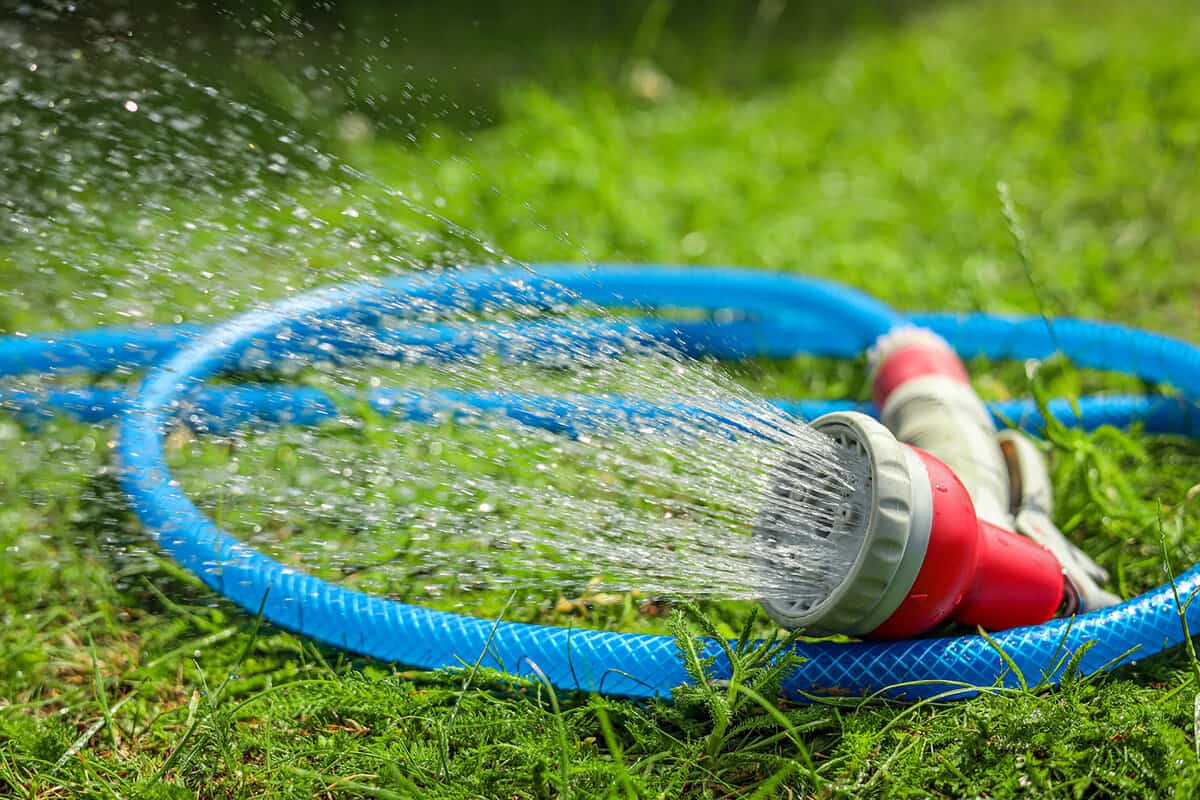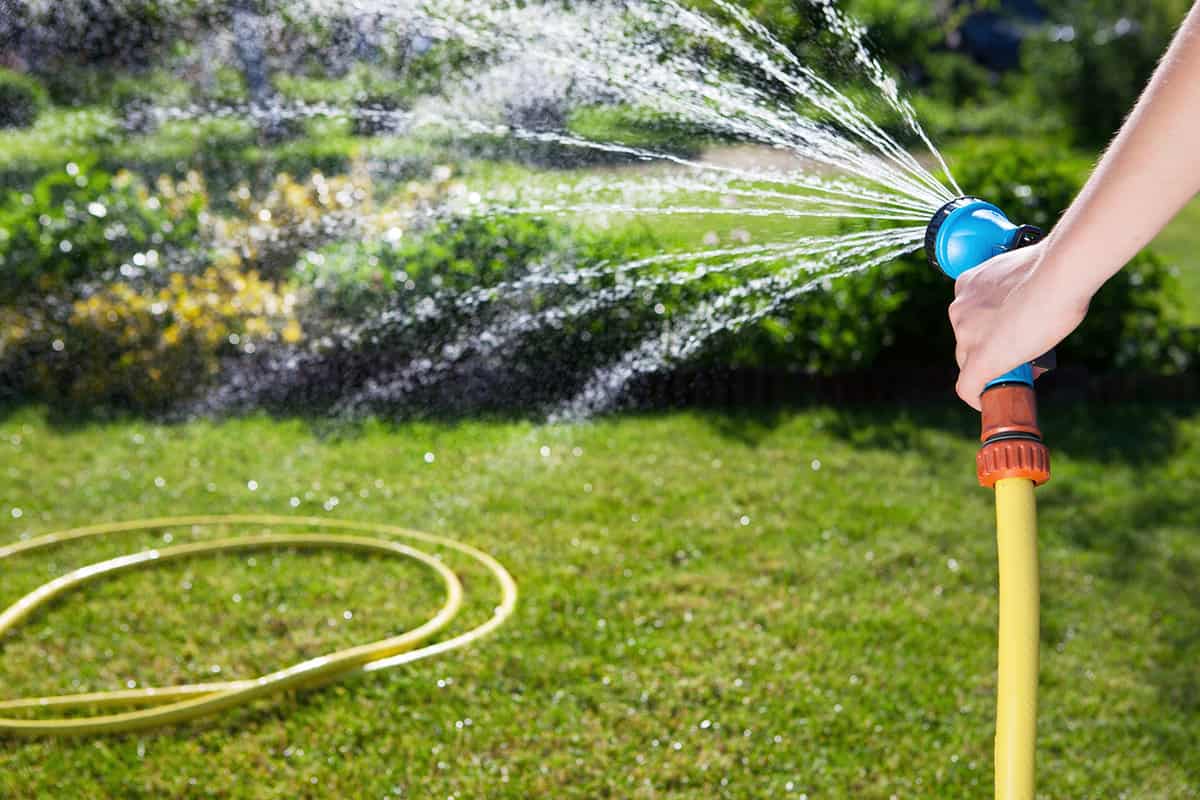A garden hose is quite possibly one of the most important things one should have in a garden. There are a lot of garden hose options that are available in the market today, and a lot of people often get confused about the standard hose sizes. We've researched this topic to share the answers with you.
The standard garden hose size in the US is typically 5/8 inches in diameter. However, you can also find garden hoses sized 3/4 and 1/2 inches in many garden supply and hardware stores. Garden hoses fitted for residential use typically come with an 11.5 NH thread size. This is a standard thread size across the US, and there are different fittings with this thread size that match your garden hose size.
Although it is pretty easy to get any garden hose from the store, it is important to find the right garden hose and fittings to prevent excess water waste. In this post, we will talk about the standard garden hose sizes you can find in the US. We'll also discuss the usual garden hose fittings that you'll need for your garden. Keep reading this post because we'll also add some tips on how to choose the right garden hose for your home.
![Top view of hosepipe on grass, What Is The Standard Garden Hose Size [Inc. Thread Size]?](https://gardentabs.com/wp-content/uploads/2022/11/Top-view-of-hosepipe-on-grass.png)
What Is The Standard Garden Hose Size [Inc? Thread Size]?
If you have a garden at home, you've probably wanted a garden hose for watering your plants. Of course, you can still go the old-fashioned way and water your plants with a watering container, but this is a lot of work and time if you have a whole yard to deal with.
Since a garden hose is a must-have for any home, it's important to find the right kind for you. However, going into the store to purchase one can be quite overwhelming, especially with the sheer number of garden hoses available on the market today. Which one of these is the standard garden hose size, and what exactly is a thread size?

There are three standard garden hose sizes that you can find in any garden or hardware store today. Generally speaking, you will find 1/2, 5/8, and 3/4-inch size garden hoses in-store. These three sizes are the most common and can be called the standard garden hose size in the US. These sizes come from the inside diameter of the garden hose. The bigger the diameter of the hose, the more water it will be able to carry and spray for use.
The most useful of the three sizes is a 5/8-inch garden hose. They are average in weight, and their water flow and pressure are just about right for an average yard. If you feel that this size is a little too heavy for you, or you have a smaller garden to tend, then a 1/2-inch garden hose will suffice. For more heavy-duty cleaning and watering needs, the 3/4-inch size is a favorite for commercial purposes and wide spaces.
Finding the Right Fittings for the Hose

Now that you've figured out what size of garden hose works best for you, you're probably wondering how you'll connect it to the garden faucet. Normally, garden hoses already come with fittings on both ends of the hose. One size connects to the garden faucet and the other end will connect to the nozzle. But did you know that are are different sizes for garden hose fittings?
First, let's start off with the thread size. If you're new to buying garden hoses, you've probably seen the term "thread size" on the packaging. Typically, the fittings of the garden hose have a standardized thread size called the GHT or Garden Hose Thread. Sometimes, it is also referred to as NHR/NH or National Hose.
These designations have a standard pitch of 11.5 threads per inch and all garden hose fittings across the US use this standard. This means that all your garden hose fittings will fit well with connectors and adapters with the same thread size.
Earlier, we mentioned that there are three different standard garden hose sizes available on the market. The same is true for garden hose fittings. When you go to your home improvement store, you'll find hose fittings that match the 1/2, 5/8, or 3/4-inch diameters of the garden hose. These garden hose fittings will work together well if you use the right sizes. However, you can also use adapters so you can fit the hose and the faucet with different diameters.
Are There Different Types Of Garden Hoses?

There are different types of garden hoses that you can use for your garden. They come in many different materials and advantages to suit the needs of different users. There are actually a lot of them, but we'll only list the most commonly purchased garden hoses in the gardening community.
Rubber hose
Get this rubber hose on Amazon.
Everyone is probably familiar with this type of hose, as this is the garden hose you'll find in many homes. Made with high-quality construction-grade rubber, these hoses can be quite heavy but can take a beating. They are pliable and easy to coil, making them easy to store when not in use.
Metal hose
Check out this steel hose on Amazon.
A bit more on the expensive side, metal hoses are tough but light. They don't kink and they easily uncoil even as you walk around the yard while using them. Metal hoses also cool down faster when water flows through them, so you don't have to waste water trying to cool down the hose before use.
Expandable hose
Grab this flexihose on Amazon.
A favorite for gardeners who don't have the space to store lengthy garden hoses, expandable hoses are usually rubber hose tubes encased in stretchy fabric. Typically, expandable hoses are very long, but you'll be able to shrink the entire set in half when not in use.
How To Choose The Right Garden Hose

When choosing the right garden hose for your home, there are a few things you should consider. Following these tips will allow you to choose the right garden hose for your home and needs.
Material
The material of your hose is important because it affects quality and ease of use. There are garden hose materials that are quite heavy, but they last longer and are more durable. However, if you're the type of gardener who tires easily with a heavy hose in hand, consider getting a lighter material for your garden hose. Of course, it will have some disadvantages and they might be less durable than other hose materials.
Length
Consider the length of your hose and don't buy one that is too long for what you really need. It will make it harder to coil the hose after use and it will take up more space in your storage. If you are unsure, you can always get a shorter hose and connect it to another hose with hose connectors.
Diameter
As discussed earlier, standard-size garden hoses come in 1/2, 5/8, or 3/4-inch sizes. These sizes refer to the interior diameter of the hose, and choosing the right diameter will also affect the amount of water the hose can carry. Of course, along with the bigger size, you'll notice that garden hoses with wider diameters are bulkier and heavier.
Pressure (PSI)
When buying a hose, you'll usually see the maximum PSI the hose can handle. The PSI measures the water speed and pressure that the hose can handle while in use. A good hose should be able to handle high water pressure without bursting.
Flexibility
One of the struggles of owning a hose is getting it to coil properly for storage. A good hose should be easy to coil and uncoil for faster use and storage. However, if the garden hose is too flexible, it means that it will kink easily and it will break faster than other hose materials.
Wrapping Things Up
Whether it's a small garden or an entire yard, a garden hose is important for all your watering needs. Aside from taking care of the plants, garden hoses are great at cleaning so it's definitely a multi-purpose tool for the home. Fortunately, it's easy to get a garden hose set and you can get them up and running in no time. Just remember to choose a garden hose that is durable, long enough to water everything you need to water outside, and has a good nozzle that lets water flow easily.
Are you looking for some information on how to fix or use your garden hose? We have some articles that can help you:
Why Is There No Water Coming Out Of My Garden Hose [& How To Fix It]



